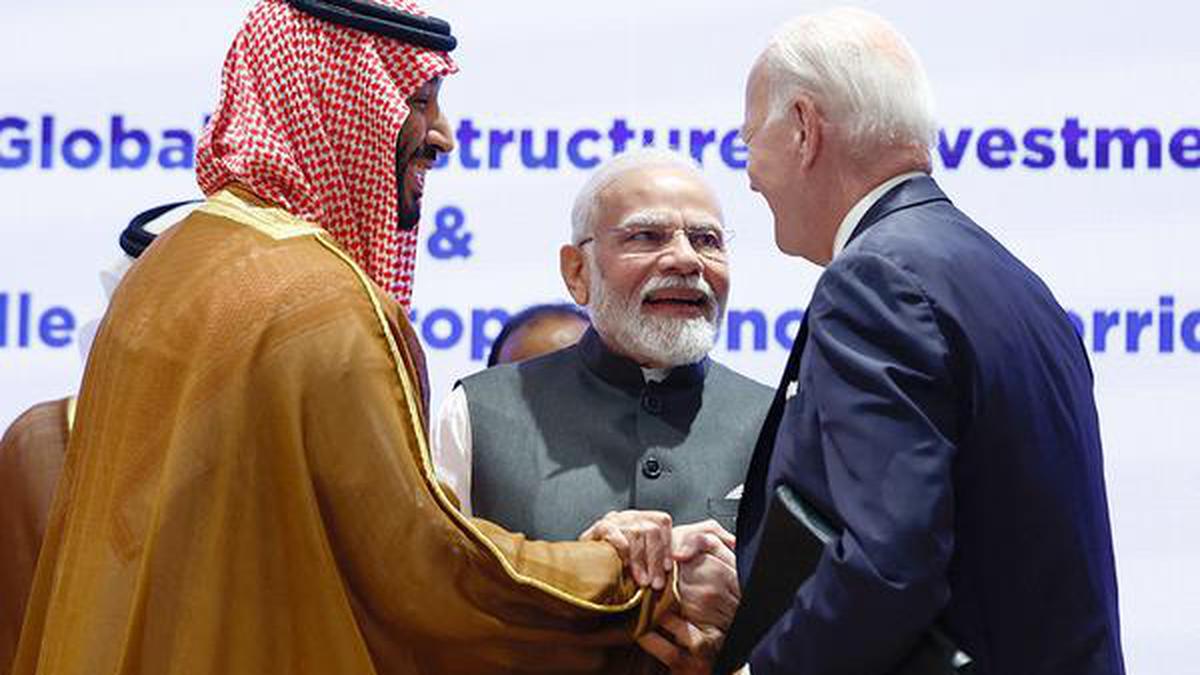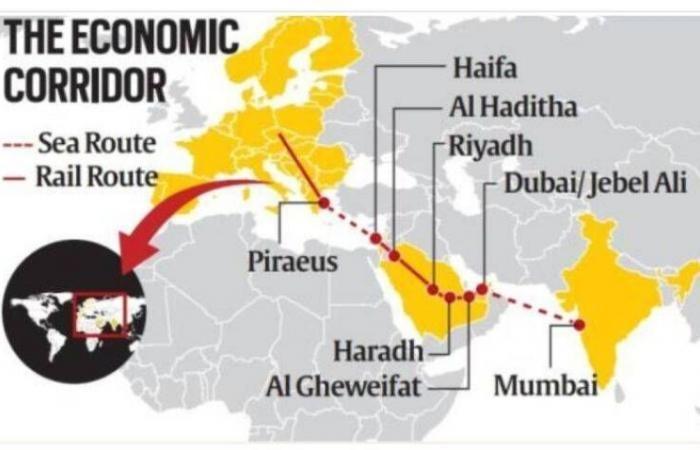Renowned Scottish Historian William Dalrymple has brought forth a captivating perspective, emphasizing the profound impact of the recently unveiled Indian-Middle Eastern Economic Corridor at the G20 Summit.

Source: The Hindu
In a recent post on Twitter, William Dalrymple shared his thoughts on the announcement of the Indian-Middle Eastern Economic Corridor at the G20 Summit. He highlighted the significance of this development, suggesting that it would once again bring global attention to the historic trade routes along the Red Sea, connecting India to Egypt—a theme he explores in his upcoming book, “The Golden Road.”
In a book review published in The New York Post, Dalrymple mentioned a noteworthy archaeological discovery made in March 2022 by American archaeologists at the ancient site of Berenike, located on the Red Sea shores in modern-day Egypt. This finding adds depth to his narrative, underscoring the historical importance of the Red Sea region.

Source: The Financial Express
What is IMEC
The India-Middle East-Europe economic corridor (IMEC) is a major development in global trade and connectivity, with the backing of the United States. It’s a project that connects India with the Middle East and Europe through a combination of rail and shipping routes. This collaborative effort involves several key participants, including India, the United Arab Emirates, Saudi Arabia, the European Union, France, Italy, Germany, and the United States.
IMEC revives historic trade connections between countries bordering the Arabian Sea and the Mediterranean Sea, aiming to boost economic growth and trade cooperation among nations in the Indian Ocean region, the Indian sub-continent, the Middle East, and Europe. This corridor’s infrastructure components encompass a rail link, an electricity cable for power transmission, a hydrogen pipeline for sustainable energy, and a high-speed data cable to facilitate communication. In essence, IMEC represents a transformative initiative with the potential to reshape economic dynamics and enhance global connectivity.

Source: Adda247
A new project called the India-Middle East-Europe economic corridor is about to launch. This project is a big deal because it’s the first of its kind. It involves cooperation and building things like roads and railways. Countries like India, UAE, Saudi Arabia, EU, France, Italy, Germany, and the US are working together on this. It’s a historic effort to improve connections and infrastructure between these countries, which will help them work together better and boost their economies.
During the annual gathering of the world’s leading economies at the Group of 20 summit, President Biden, Indian Prime Minister Narendra Modi, and European Commission President Ursula von der Leyen made a significant announcement. They unveiled a transformative project under the umbrella of the Partnership for Global Infrastructure Investment. According to a White House report, this initiative is set to forge crucial connections by establishing rail and shipping links that will extend from India to Europe, passing through key countries like the UAE, Saudi Arabia, Jordan, and Israel. This venture represents a monumental step towards enhancing global connectivity and economic collaboration.

Source: BQ Prime
The ‘India-Middle East-Europe’ economic corridor is a groundbreaking initiative. According to Ursula von der Leyen, President of the European Commission, it will establish the quickest trade route yet between India and Europe. During her speech at the Partnership for Global Infrastructure Investment (PGII) and India-Middle East-Europe Economic Corridor event held at Bharat Mandapam, she emphasized that this corridor would reduce trade time by 40%.
Von der Leyen hailed the project as an environmentally friendly and technologically advanced connection linking continents and cultures. She also noted the incorporation of electricity and data transmission cables. This rail and shipping corridor proposal is an ambitious endeavor with the goal of stimulating economic growth and promoting political cooperation, aiming to connect India with the Middle East and Europe.



















































































